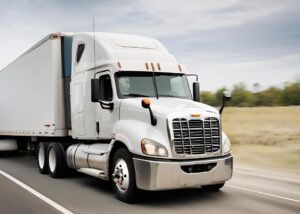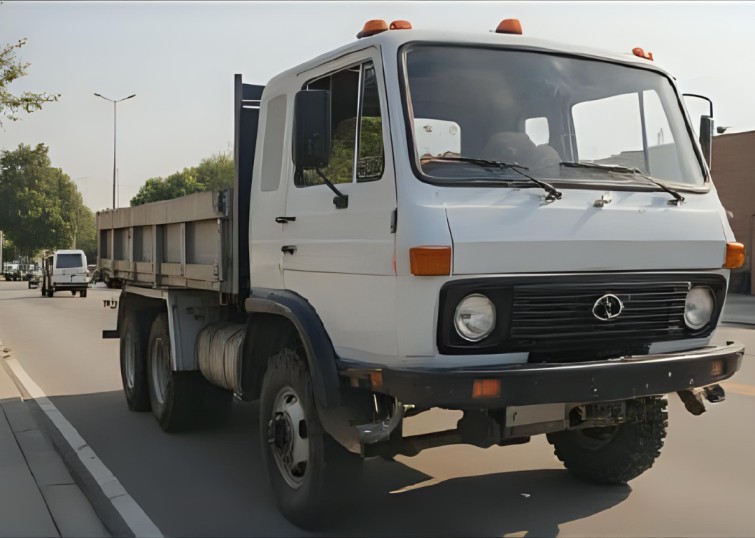TL;DR
When involved in a semi-truck collision, determining liability is crucial for seeking compensation. Key factors include identifying responsible parties, understanding trucking regulations, and gathering evidence. It’s essential to consult with legal experts who specialize in truck accident cases to navigate the complexities of liability and ensure your rights are protected.
Key Highlights
- Identify Responsible Parties: Liability may fall on the truck driver, trucking company, vehicle manufacturer, or other parties.
- Understand Regulations: Familiarize yourself with federal and state trucking regulations that impact liability.
- Gather Evidence: Collect police reports, witness statements, and accident scene photos.
- Consult Legal Experts: Seek advice from attorneys experienced in semi-truck collision cases.
- Consider Insurance Policies: Understand the insurance coverage of all involved parties.
- Document Everything: Keep detailed records of medical expenses, vehicle damage, and lost wages.

Semi-truck collisions frequently result in life-altering injuries and fatalities, with the Federal Motor Carrier Safety Administration (FMCSA) reporting over 168,000 injury crashes involving large trucks in 2022. In Georgia, where commercial trucking routes intersect with densely populated urban centers and rural highways, these accidents often involve complex chains of responsibility. Unlike ordinary car crashes, determining liability in a semi-truck accident typically means investigating multiple partiesincluding the driver, carrier, maintenance contractors, and cargo loaderseach of whom may have contributed to the events leading up to the collision.
Georgia law imposes a duty of care on all drivers, including commercial operators, under O.C.G.A. § 51-1-2. When a truck driver or their employer fails to uphold that dutywhether by violating federal safety regulations, overloading a trailer, or neglecting required maintenancethey may be held legally liable for the resulting damages. Plaintiffs in these cases must establish not just who caused the crash, but how their actions or omissions violated specific legal standards. This article breaks down the process of identifying liable parties in semi-truck collision lawsuits, analyzing how evidence such as driver logs, black box data, and FMCSA compliance records can be used to build a compelling legal case under Georgia law.
Understanding Liability in Semi-Truck Collisions
1. Who Can Be Held Liable?
In semi-truck collisions, multiple parties may share liability. The primary parties typically include:
- Truck Driver: If the driver acted negligently, such as driving under the influence or violating traffic laws, they could be held responsible.
- Trucking Company: Employers can be liable for their employees’ actions under the principle of vicarious liability. If the driver was working within the scope of their employment at the time of the accident, the company may also be held accountable.
- Vehicle Manufacturer: If a mechanical failure caused the accident due to a defect in the truck, the manufacturer could be liable.
- Maintenance Providers: Companies responsible for maintaining the truck may also share liability if poor maintenance contributed to the accident.
2. The Role of Negligence
Negligence is a central concept in establishing liability. To prove negligence, the following elements must be demonstrated:
- Duty of Care: The responsible party had a legal duty to operate the vehicle safely.
- Breach of Duty: The party failed to uphold that duty, such as through reckless driving or inadequate maintenance.
- Causation: The breach directly caused the accident and resulting injuries.
- Damages: The victim suffered actual damages, such as medical bills, lost wages, or pain and suffering.
3. Federal and State Regulations
Both federal and state regulations play a crucial role in determining liability. The Federal Motor Carrier Safety Administration (FMCSA) sets nationwide standards for commercial trucking. Key regulations include:
- Hours of Service: Limits on driving hours to prevent driver fatigue.
- Vehicle Maintenance: Requirements for regular inspections and maintenance to ensure safety.
- Driver Qualifications: Standards for obtaining a CDL and undergoing training.
In Georgia, state laws complement federal regulations, reinforcing the importance of compliance. Violations of these regulations can serve as evidence of negligence.
Gathering Evidence for Your Case
1. Police Reports
Obtaining a police report is essential in any collision case. The report provides an official account of the incident, including details about the parties involved, witness statements, and any citations issued. This document serves as a foundational piece of evidence in establishing liability.
2. Witness Statements
Eyewitness accounts can provide valuable insights into the circumstances surrounding the accident. Collect contact information from witnesses and, if possible, obtain written statements detailing what they observed. These statements can corroborate your version of events and strengthen your case.
3. Accident Scene Photos
Visual evidence can be powerful in illustrating the severity of the collision and the conditions at the time. Take photographs of the accident scene, vehicle damage, skid marks, and any relevant road signs or signals. These images can help reconstruct the incident and provide context for your claims.
4. Medical Records
Documenting your injuries is crucial for establishing the extent of damages. Keep records of medical treatments, bills, and any ongoing care. These documents will be vital in demonstrating the impact of the accident on your life.
5. Expert Testimony
In complex cases, expert witnesses may be necessary to establish liability. For example, accident reconstruction specialists can analyze the scene and provide insights into how the collision occurred. Their expert testimony can lend credibility to your claims.
The Insurance Aspect of Liability
1. Understanding Insurance Policies
Both truck drivers and trucking companies are typically required to carry commercial insurance. Understanding the coverage limits and terms of these policies is essential for pursuing compensation. Key considerations include:
- Liability Coverage: This covers damages caused by the insured party. It’s crucial to know the limits of this coverage.
- Uninsured/Underinsured Motorist Coverage: This protects victims if the responsible party lacks sufficient insurance.
- Medical Payments Coverage: This can help cover medical expenses regardless of fault.
2. Filing Claims
After a semi-truck collision, victims usually file claims with the at-fault party’s insurance company. It’s important to document all communications and keep records of any claims filed. Insurance adjusters may attempt to minimize payouts, so having comprehensive evidence is vital.
3. Negotiating Settlements
Insurance companies often aim to settle claims quickly and for the lowest amount possible. Be prepared to negotiate and consider consulting with an attorney who specializes in truck accident cases. They can help you understand the true value of your claim and advocate on your behalf.
Legal Considerations in Semi-Truck Collision Lawsuits
1. Statute of Limitations
In Georgia, the statute of limitations for personal injury claims, including those resulting from truck accidents, is typically two years from the date of the accident. It’s crucial to file your lawsuit within this timeframe to preserve your right to seek compensation.
2. Comparative Negligence
Georgia follows a modified comparative negligence rule. This means that if you are found partially at fault for the accident, your compensation may be reduced by your percentage of fault. If you are more than 50% at fault, you may be barred from recovering damages altogether.
3. Filing a Lawsuit
If negotiations with the insurance company do not yield satisfactory results, filing a lawsuit may be necessary. This process involves drafting and submitting legal documents, adhering to court rules, and potentially going to trial. Having an experienced semi truck accident attorneys can significantly impact the outcome of your case.
Choosing the Right Legal Representation
1. Experience with Truck Accident Cases
When selecting an attorney, look for someone with specific experience in truck accident cases. These cases often involve complex regulations and unique challenges that require specalized knowledge.
2. Track Record of Success
Research potential attorneys’ track records in handling similar cases. A successful history can indicate their ability to navigate the legal system effectively.
3. Communication and Support
Choose an attorney who communicates clearly and provides support throughout the process. You should feel comfortable discussing your case and confident in their guidance.
Conclusion
Establishing liability in semi-truck collision lawsuits is a multifaceted process that requires careful consideration of various factors. From identifying responsible parties to understanding regulations and gathering evidence, each step plays a crucial role in building a strong case. By consulting with experienced legal professionals and being proactive in documenting your case, you can enhance your chances of obtaining the compensation you deserve.
If you or a loved one has been involved in a semi-truck collision, seeking legal advice is essential. Don’t wait until it’s too latetake action now to protect your rights and explore your options for compensation. Contact us today for a free consultation and start your journey toward justice today.



